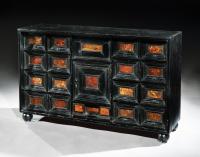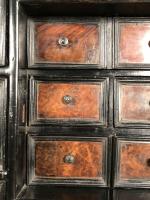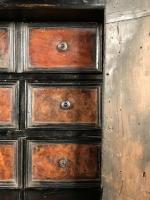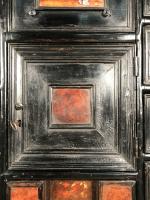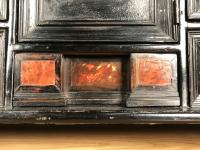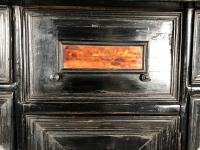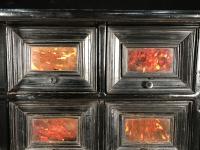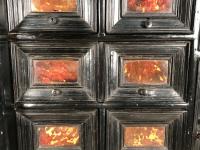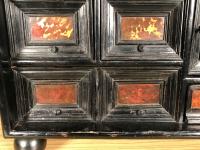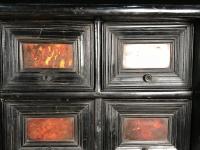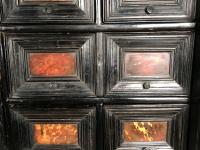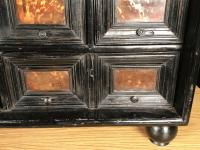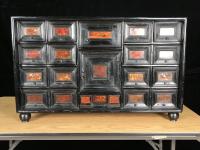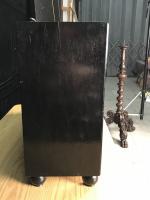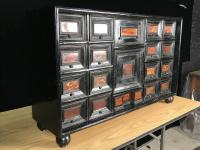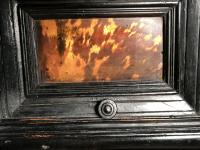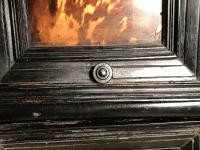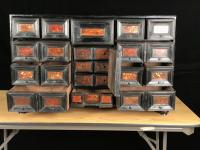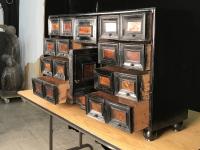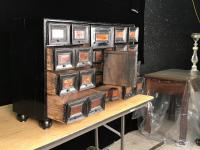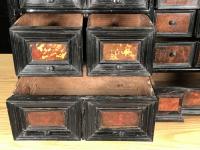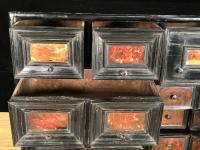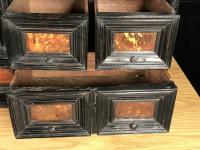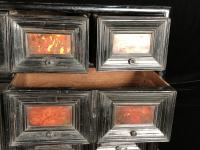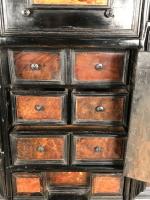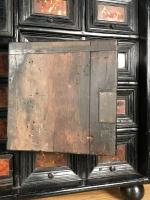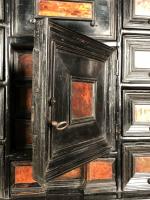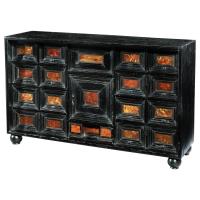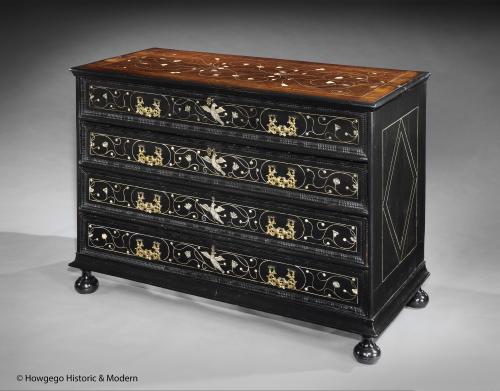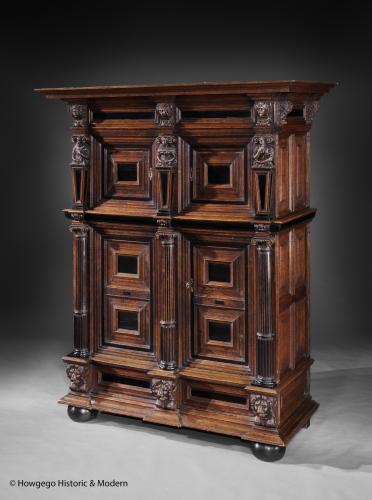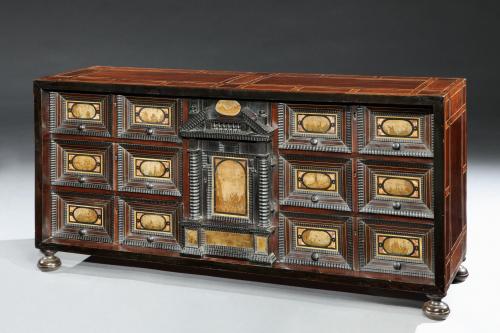
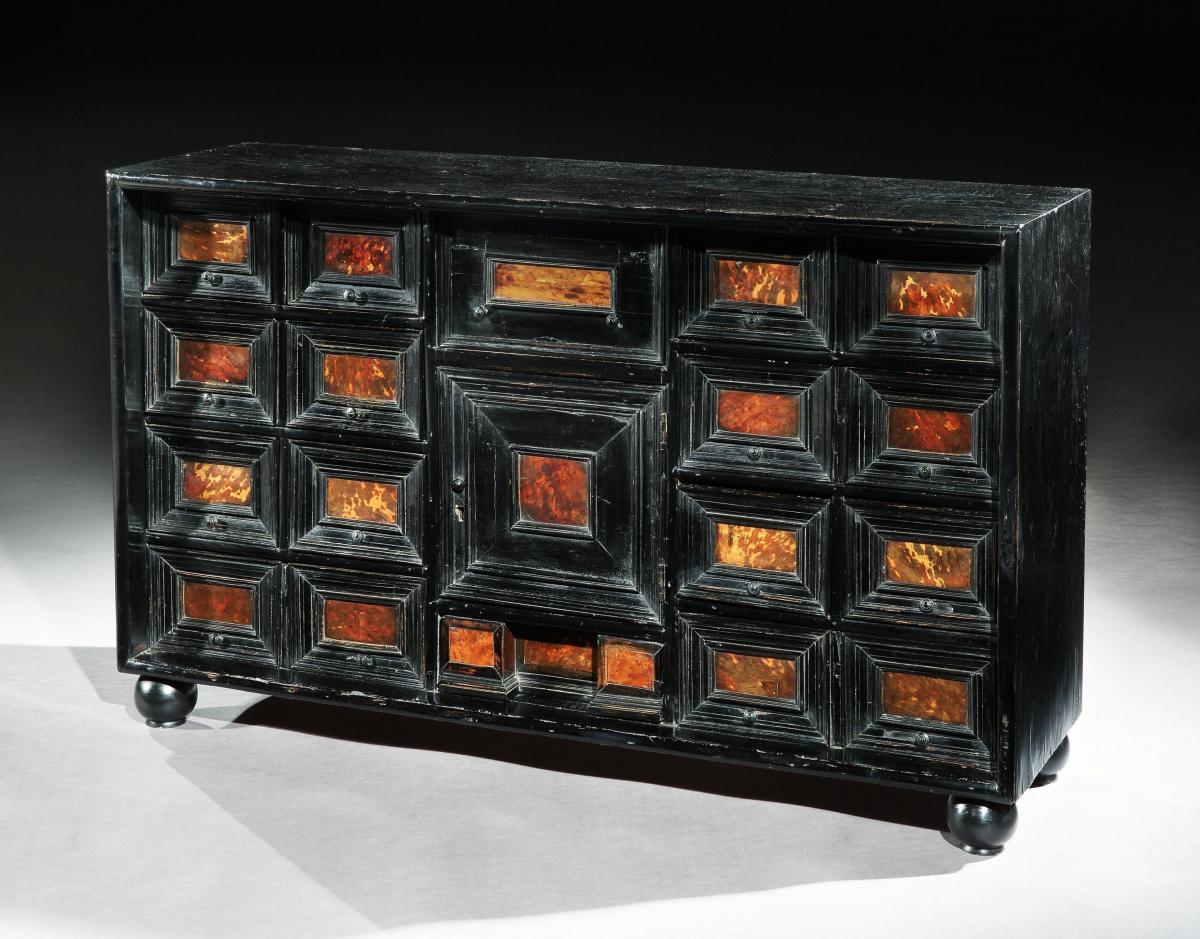
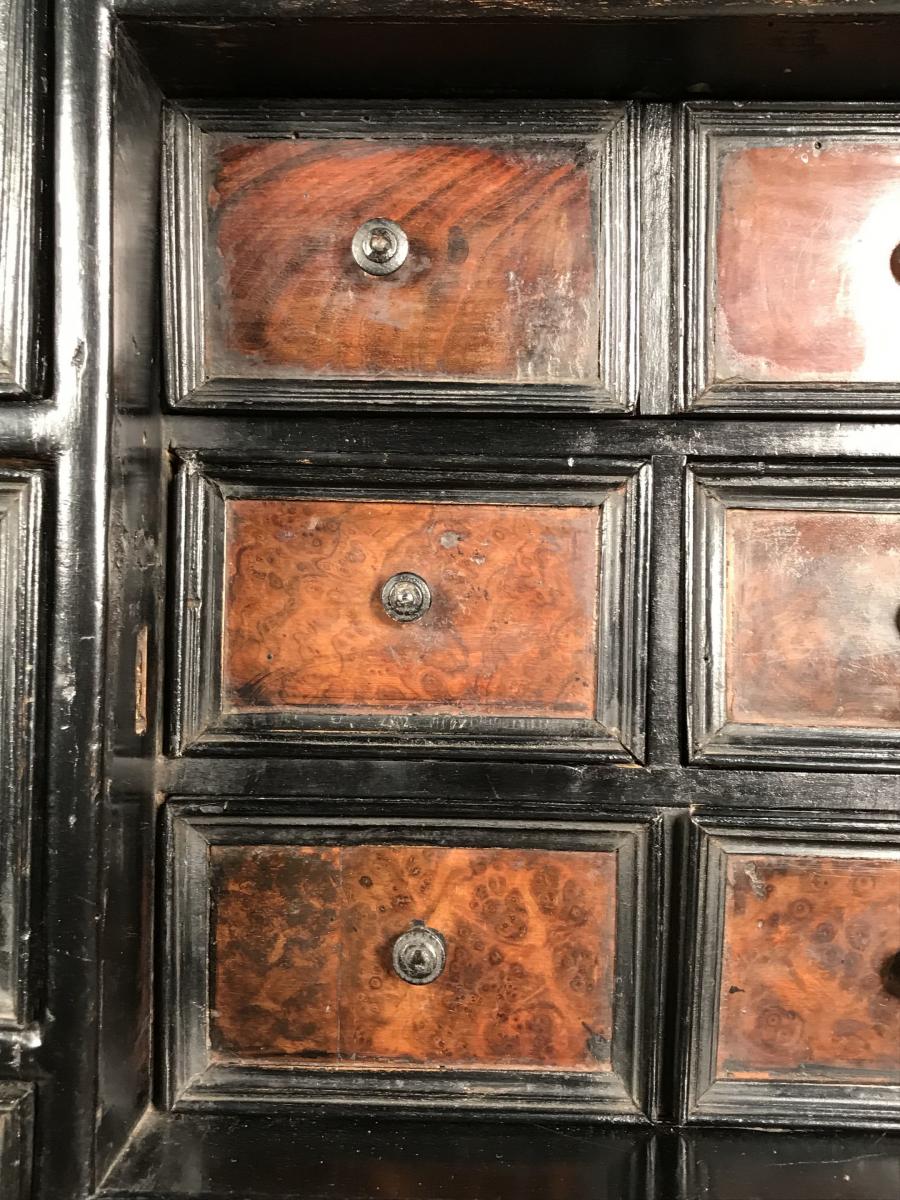
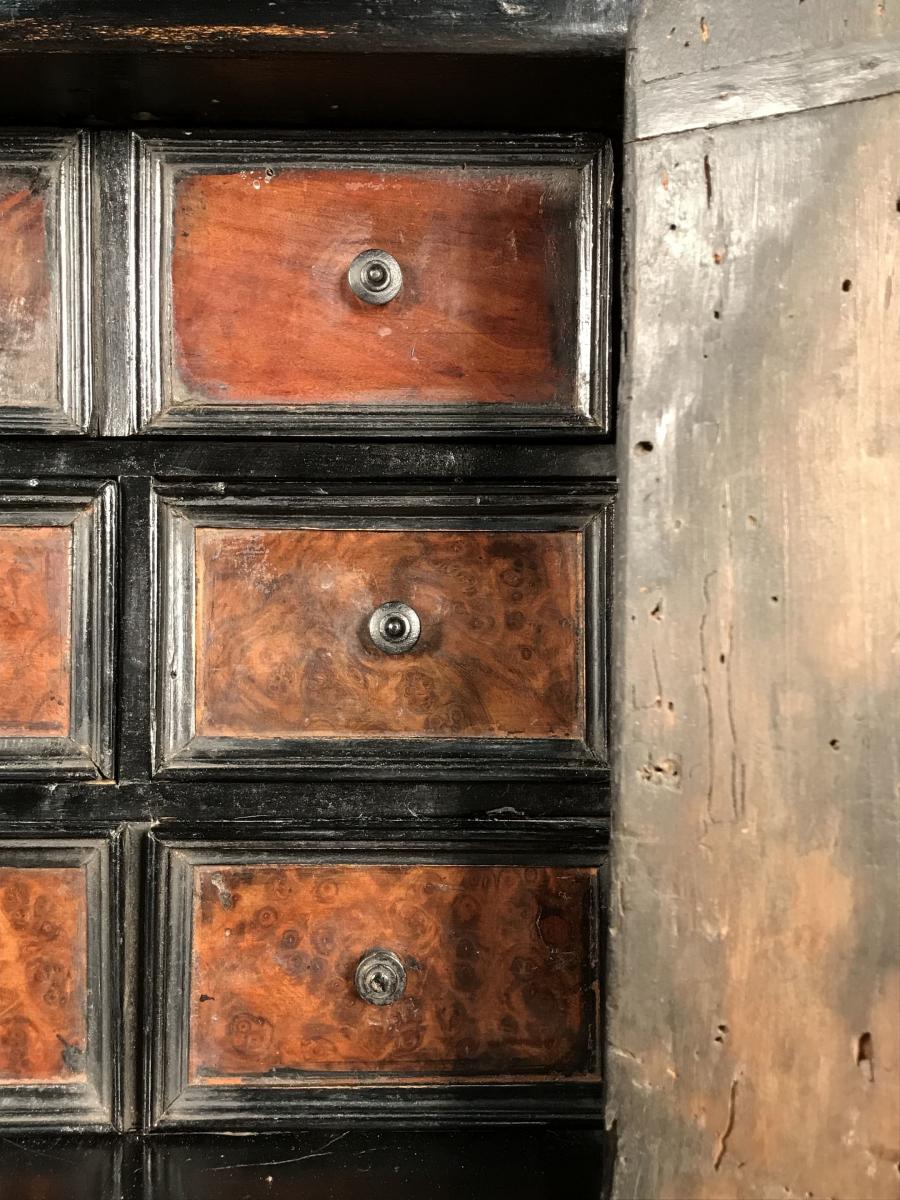
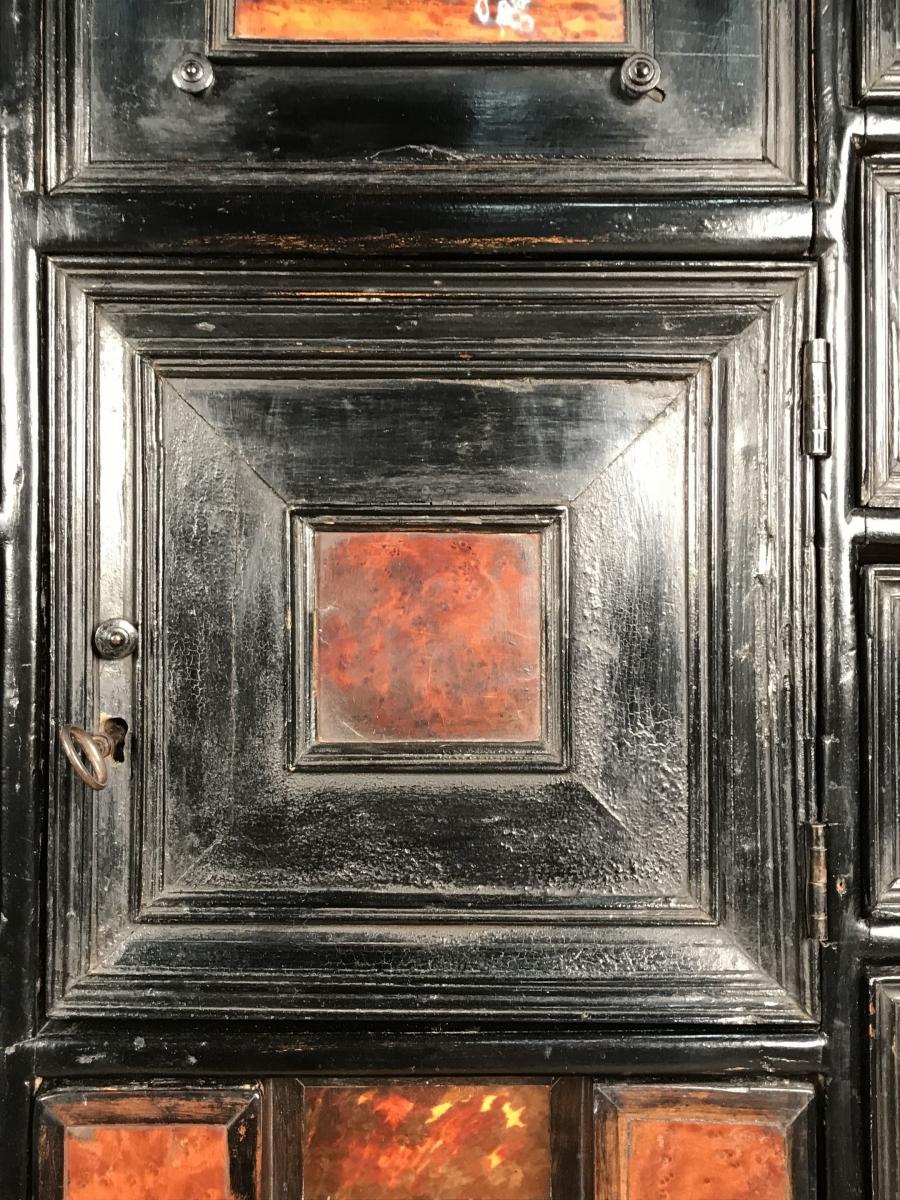
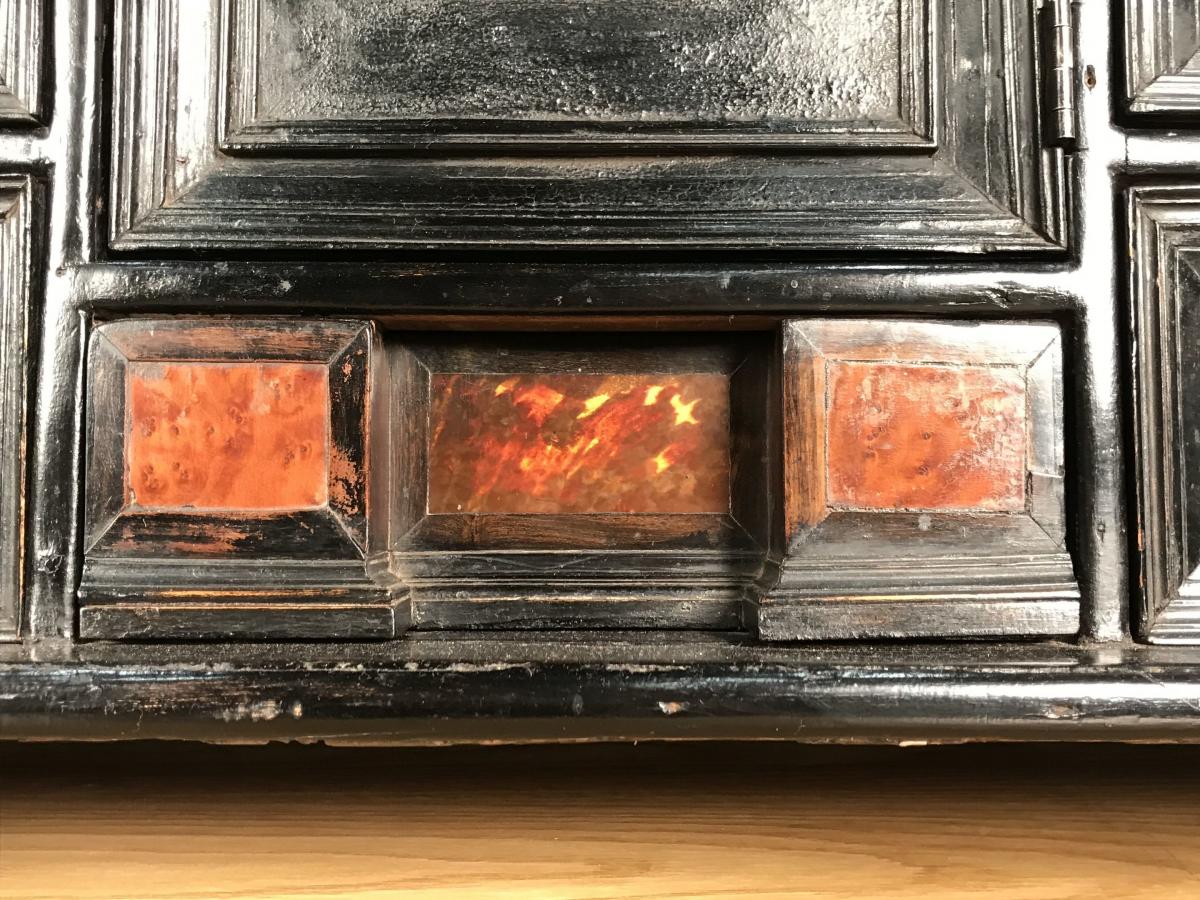
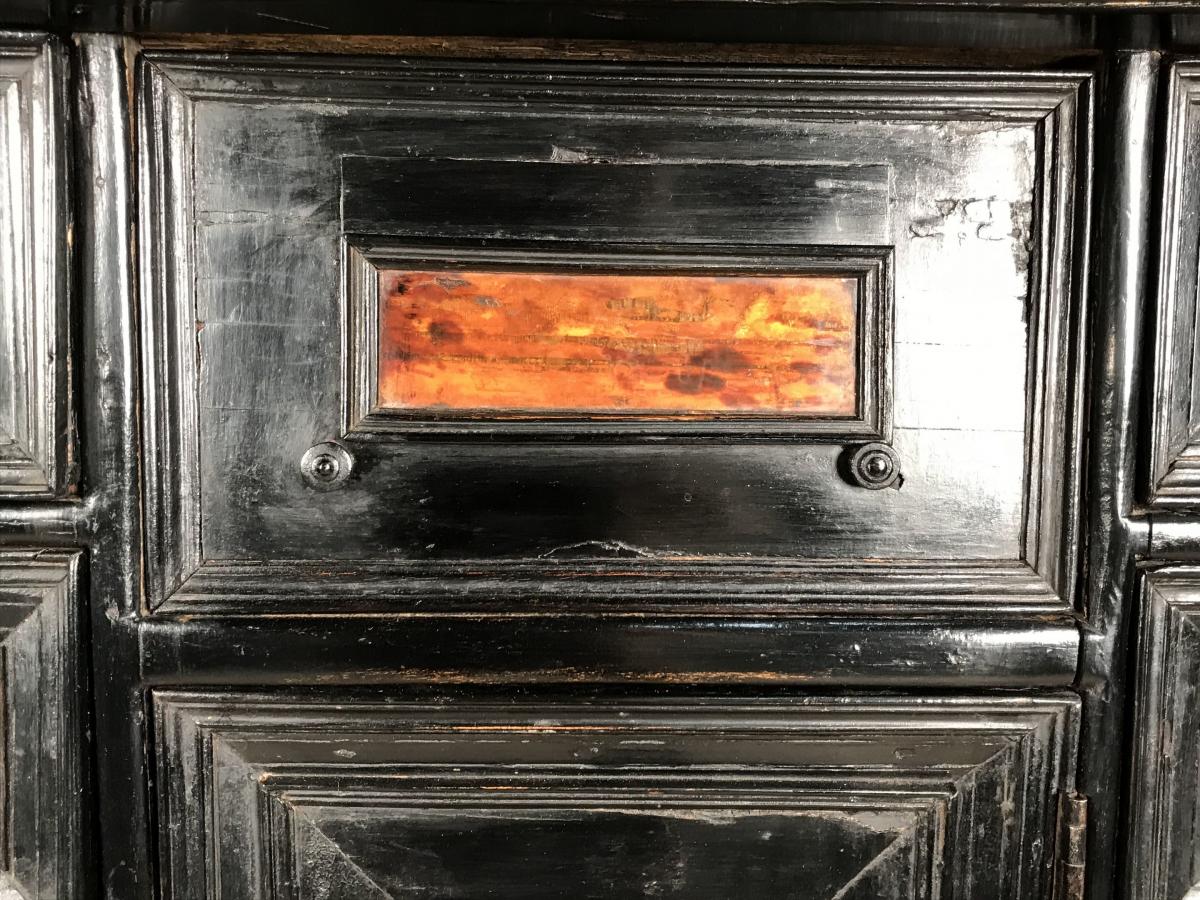
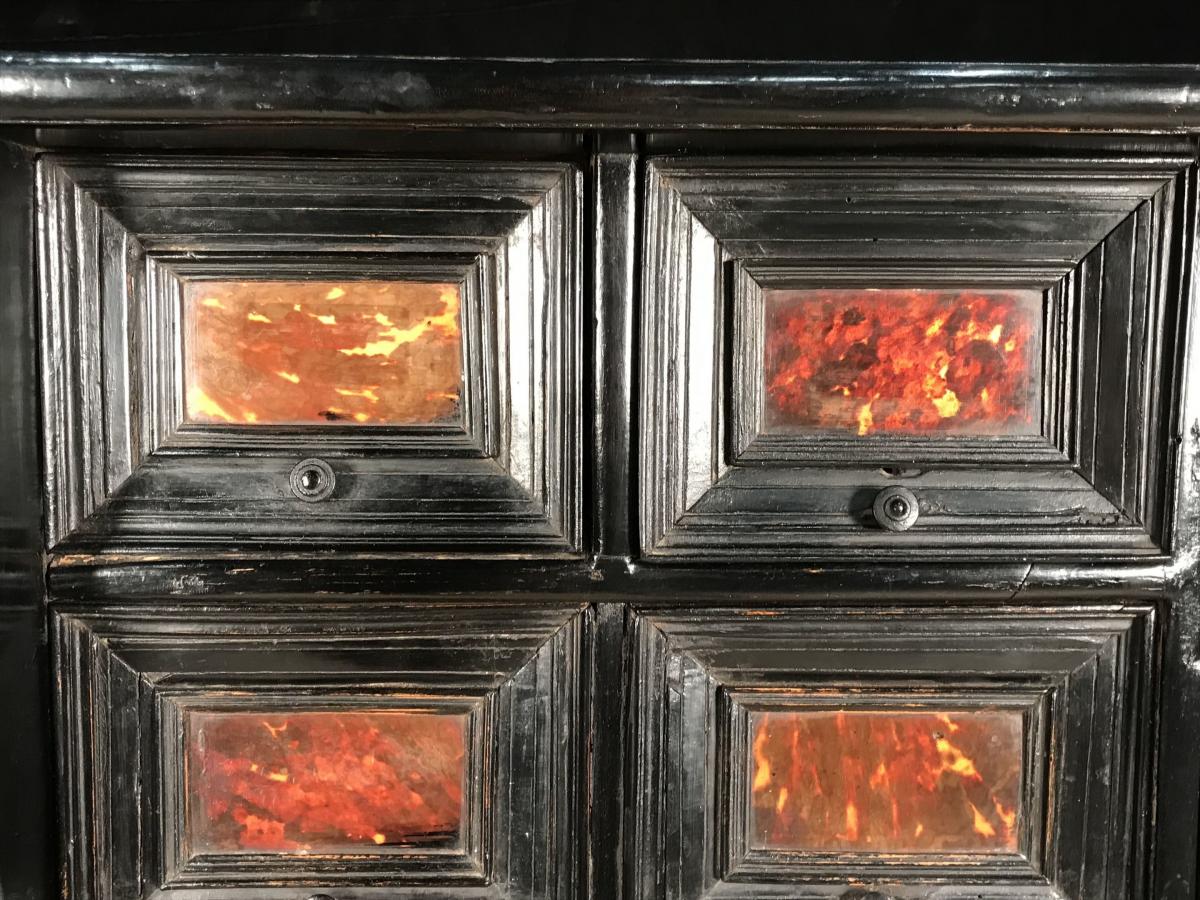
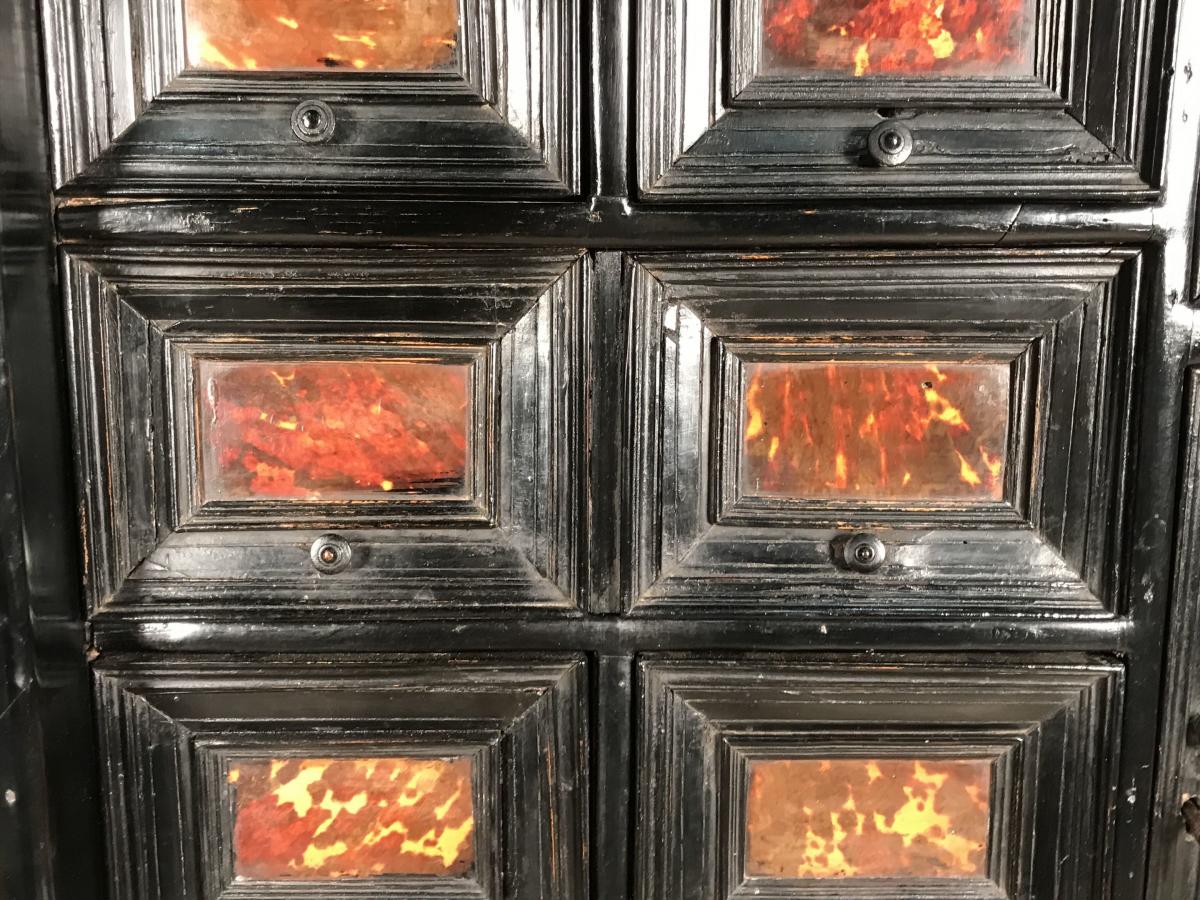
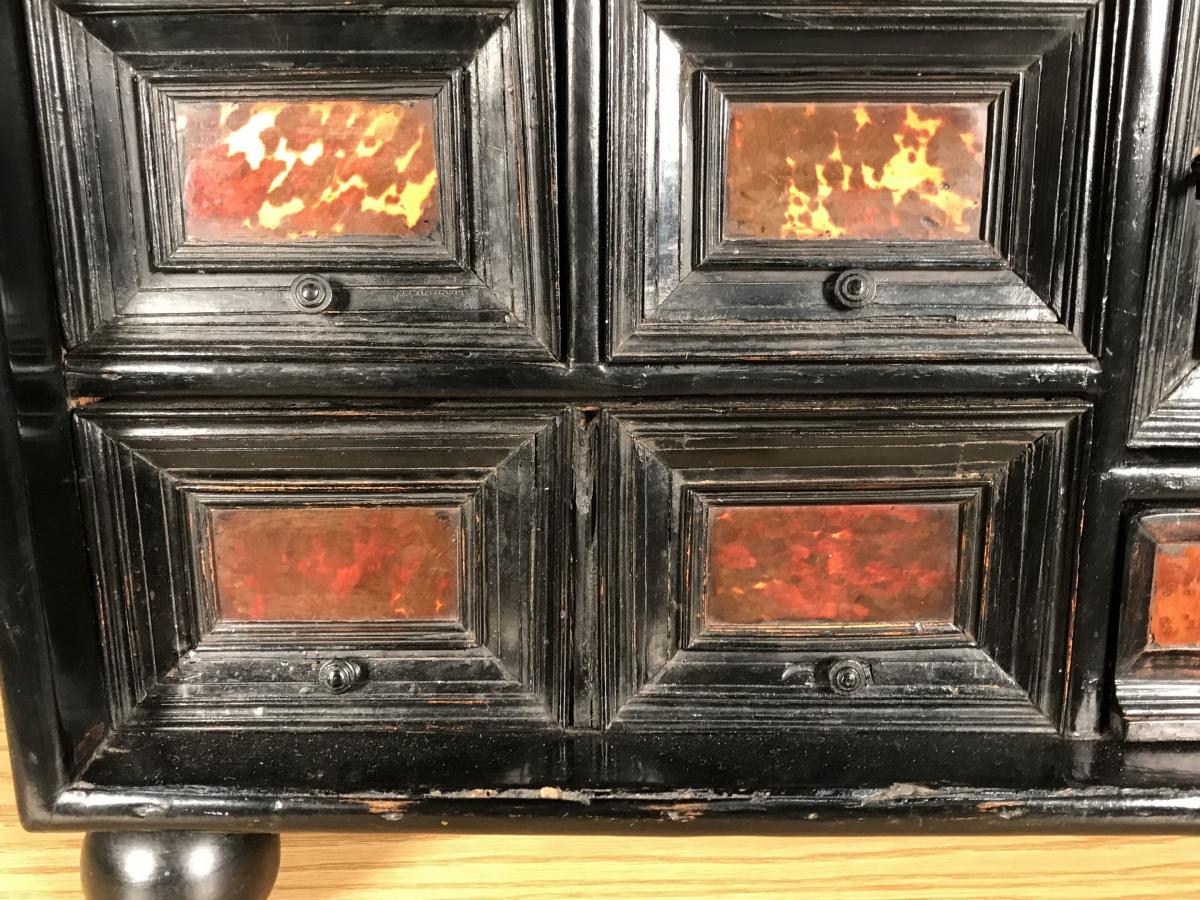
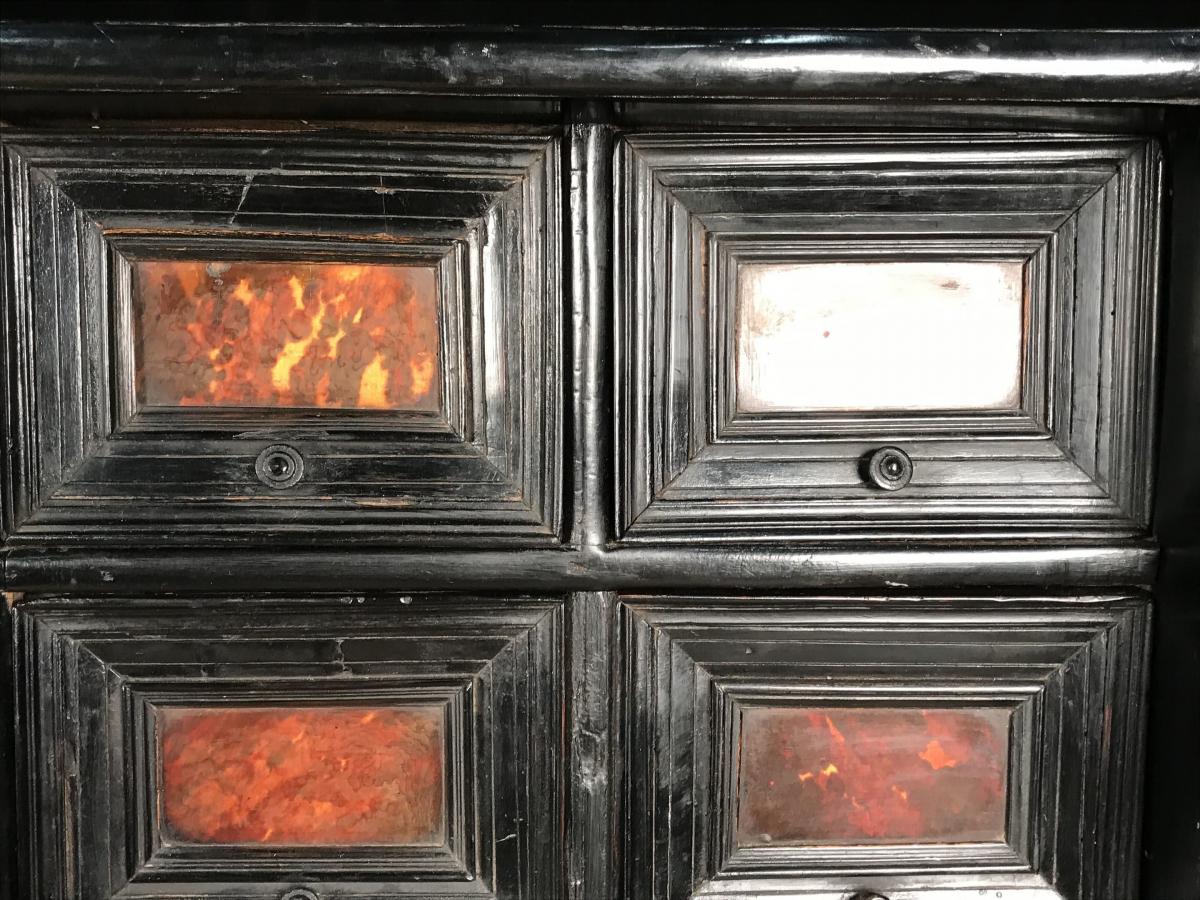
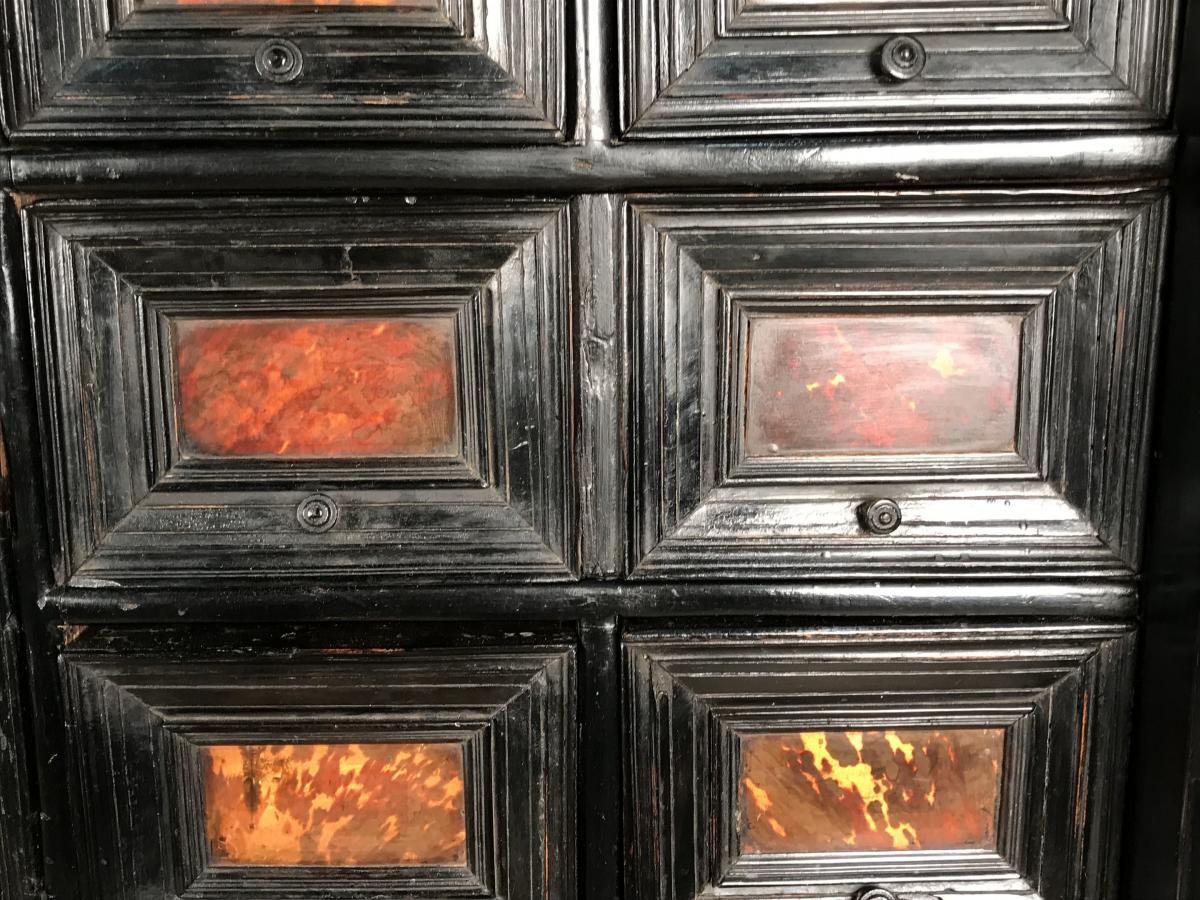
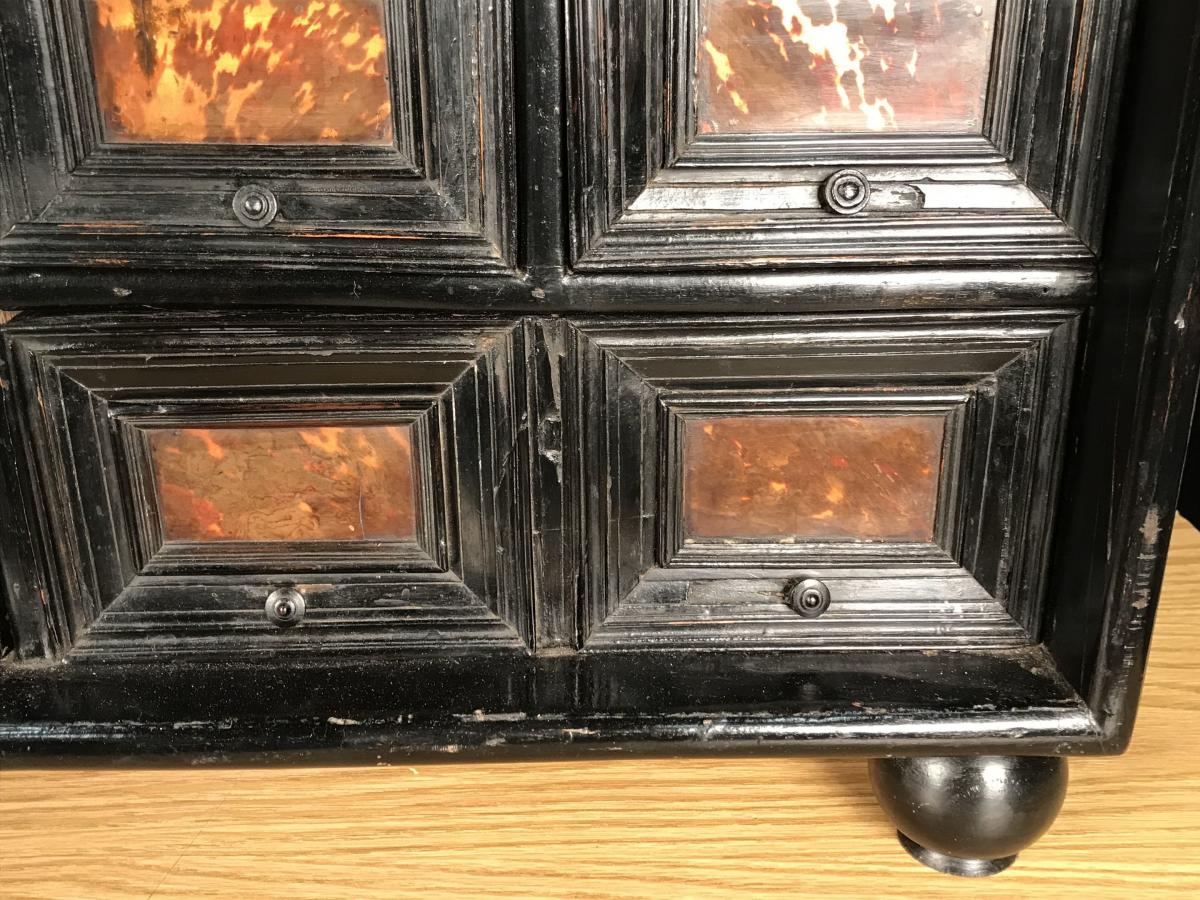
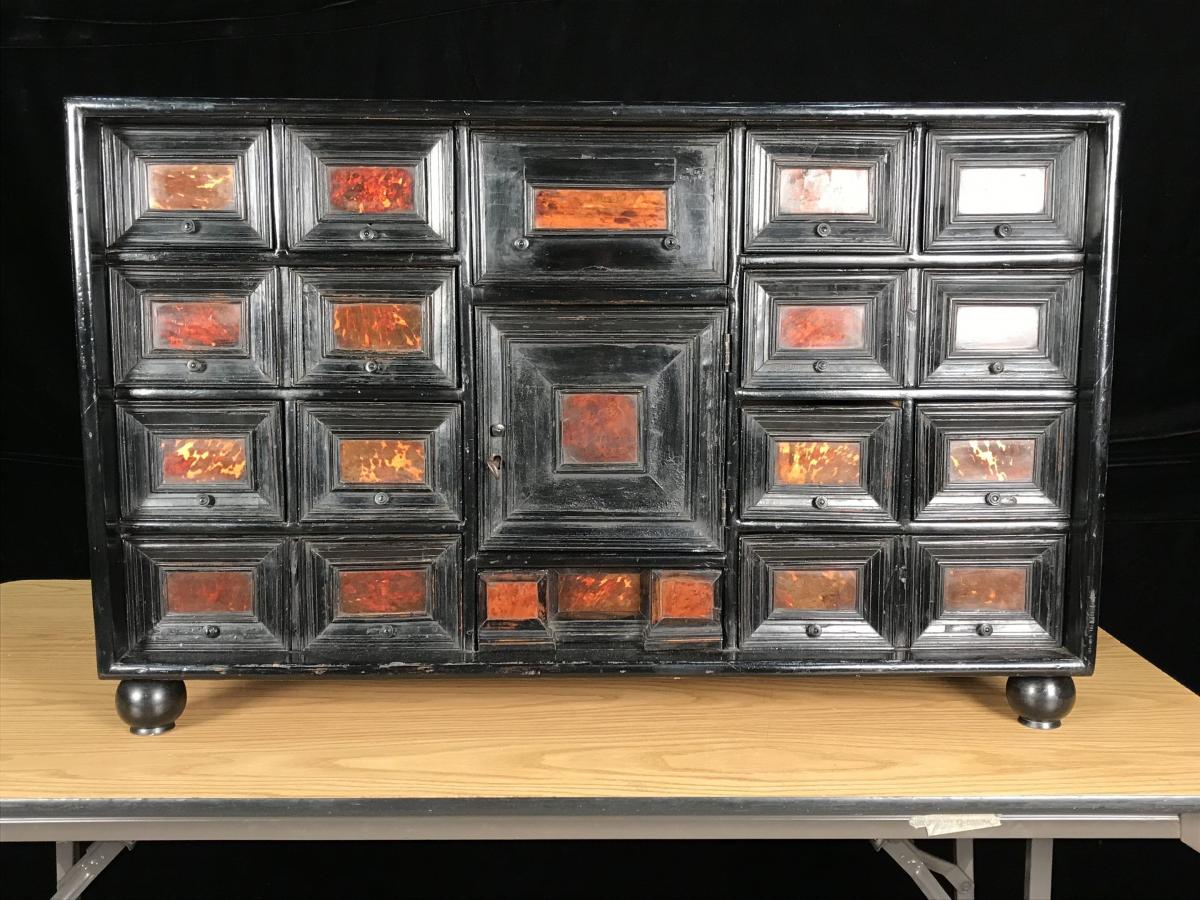
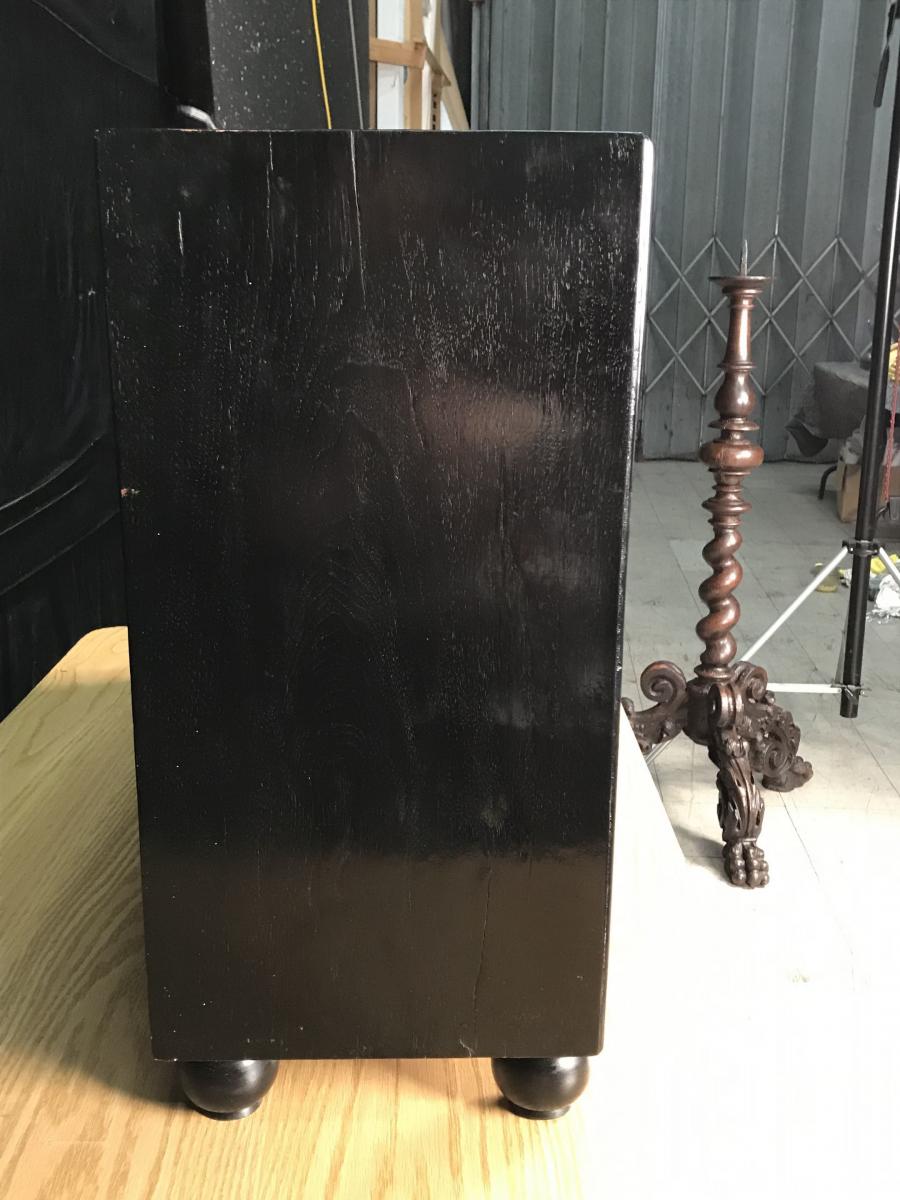
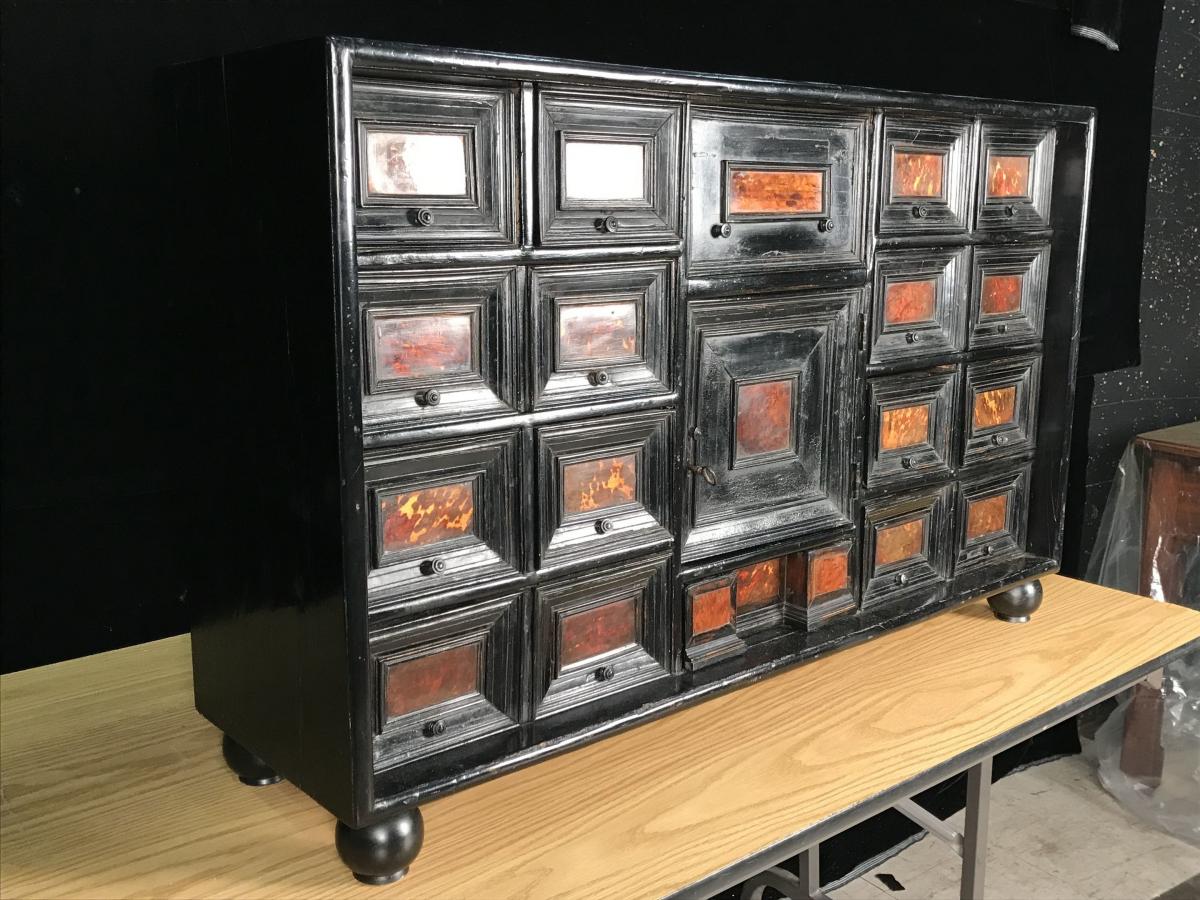
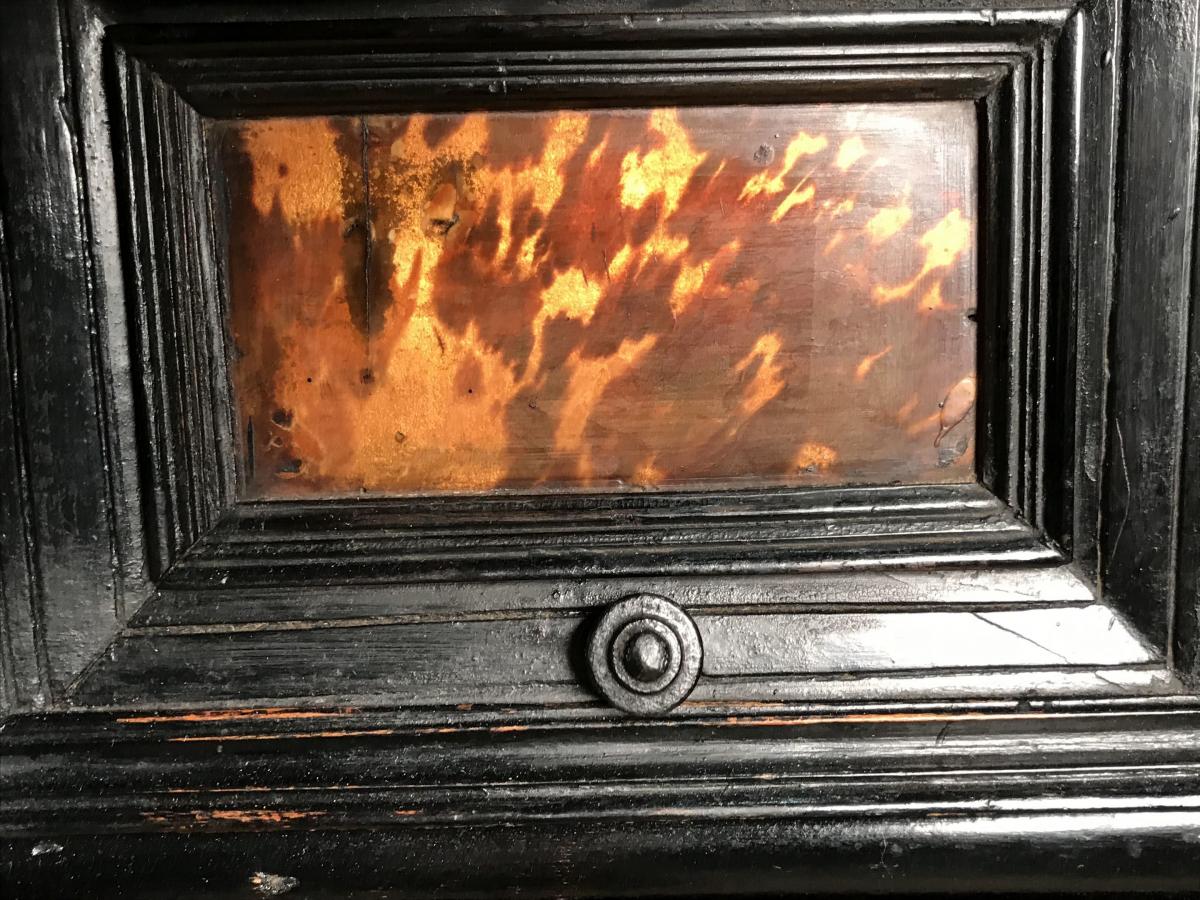
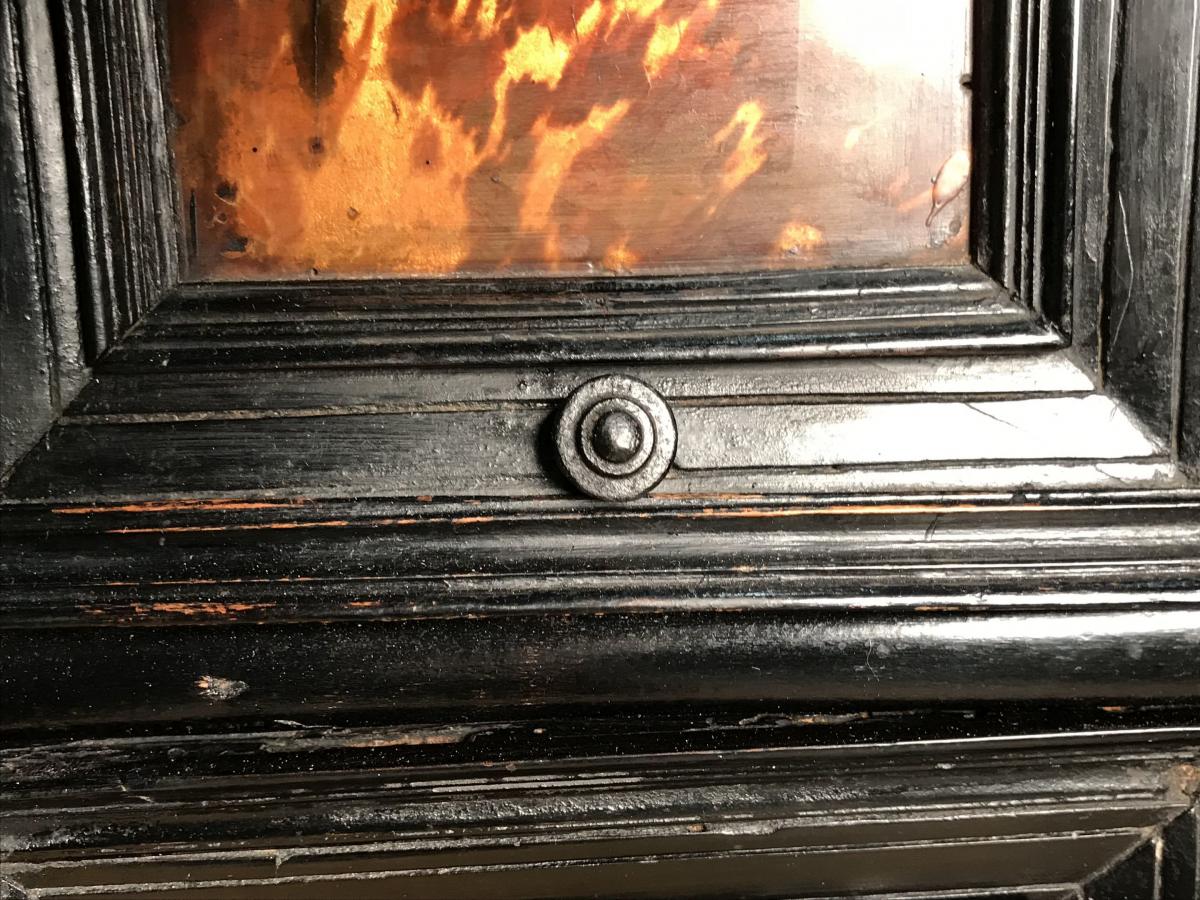
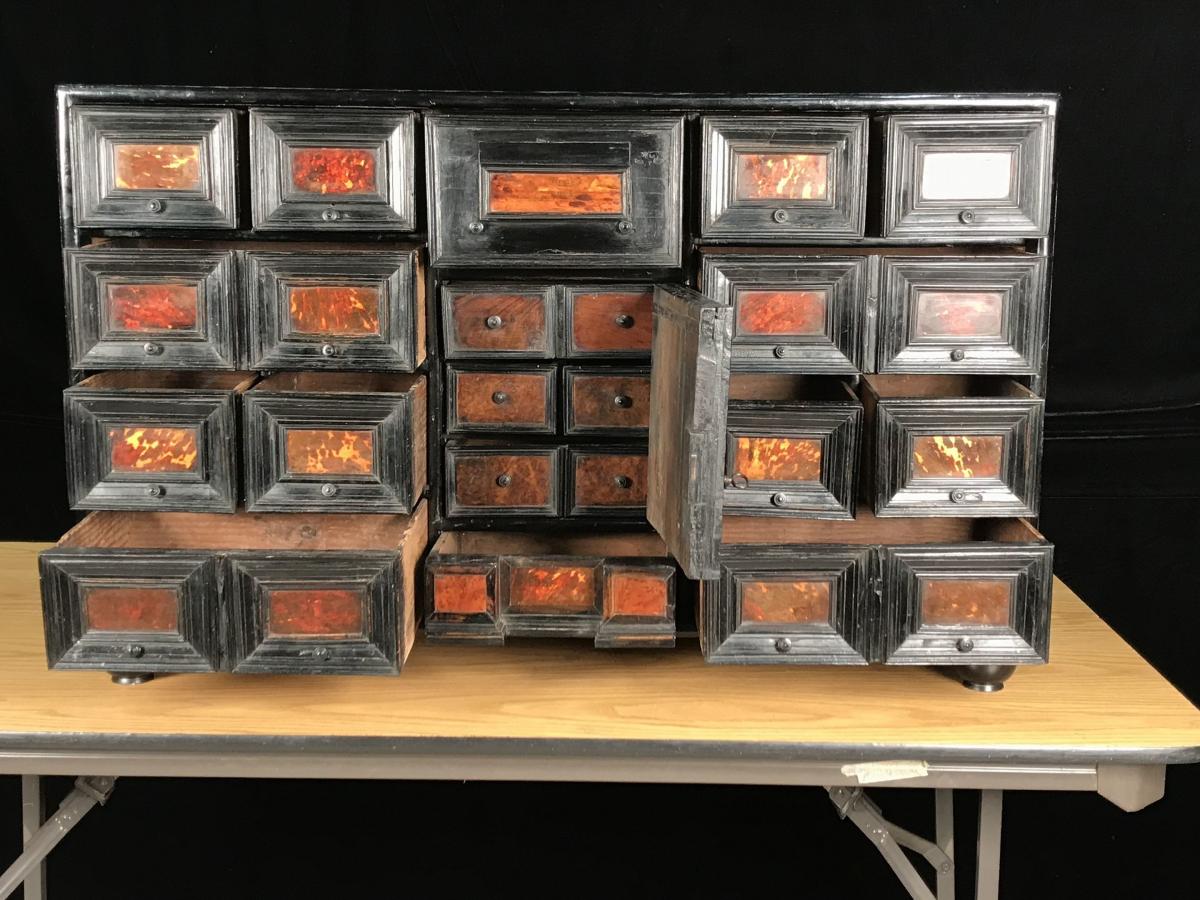
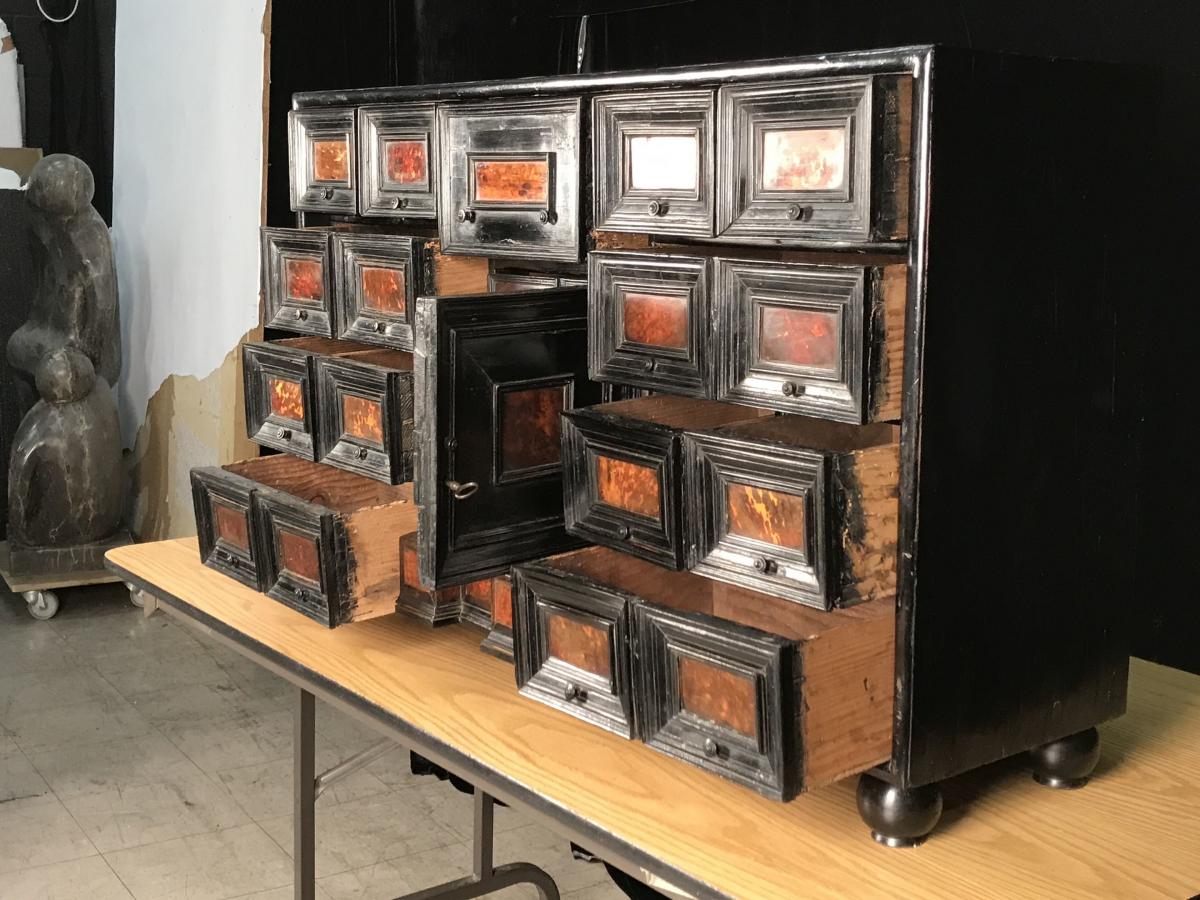
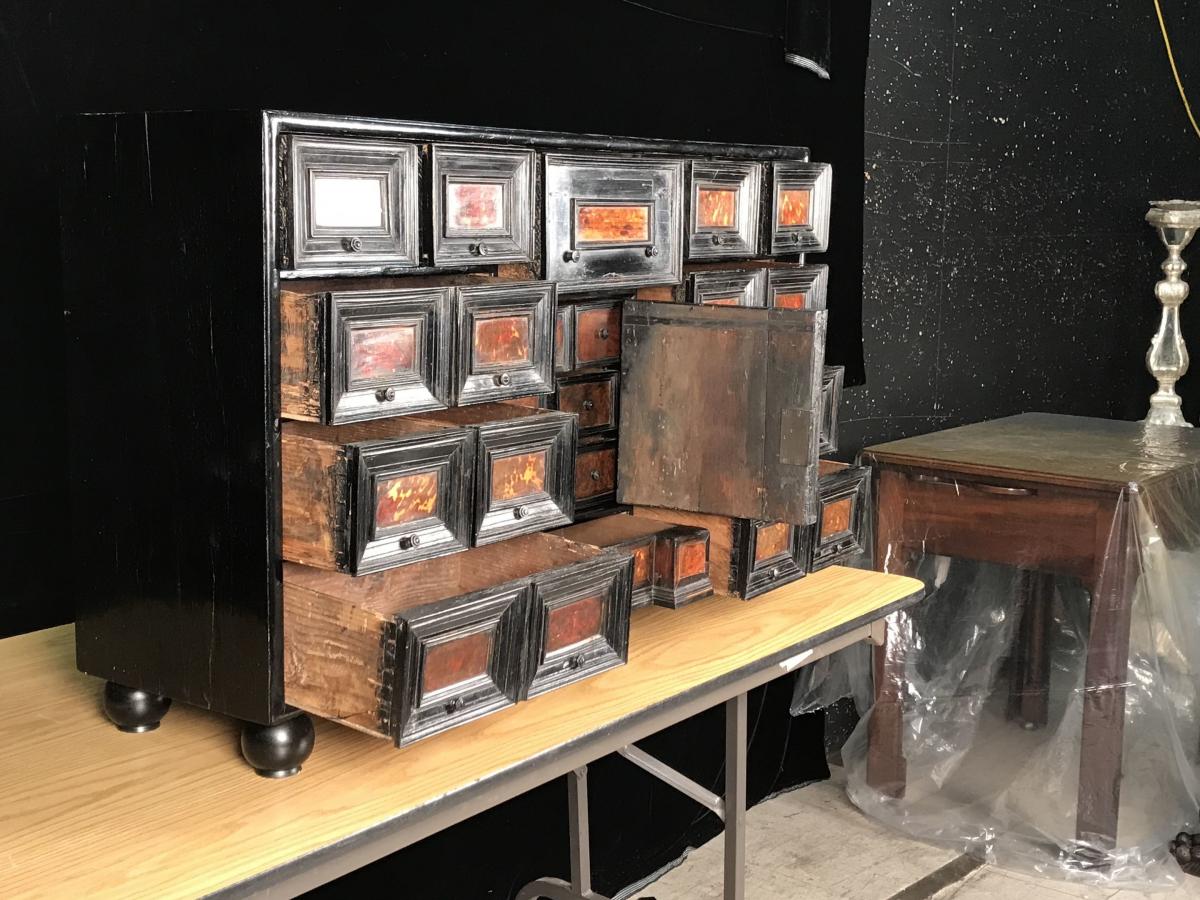
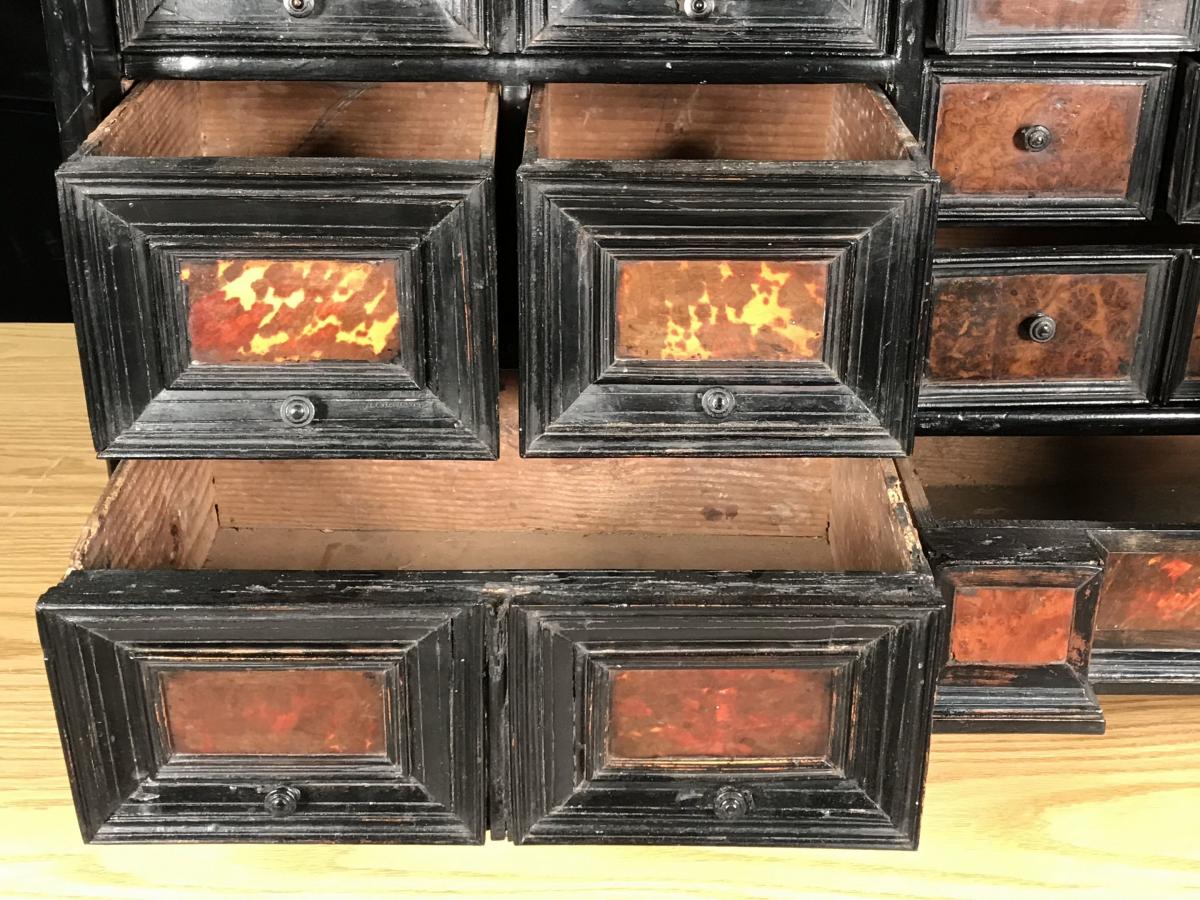
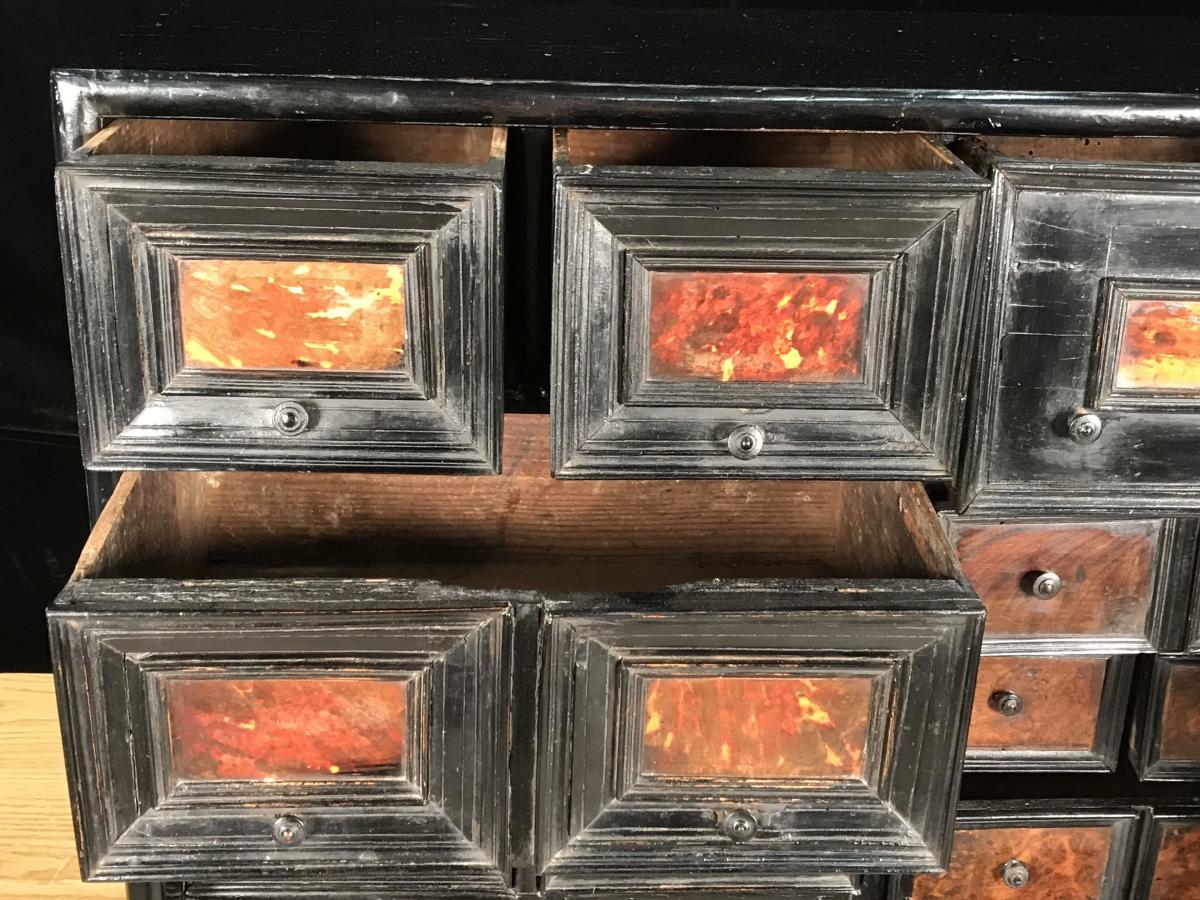
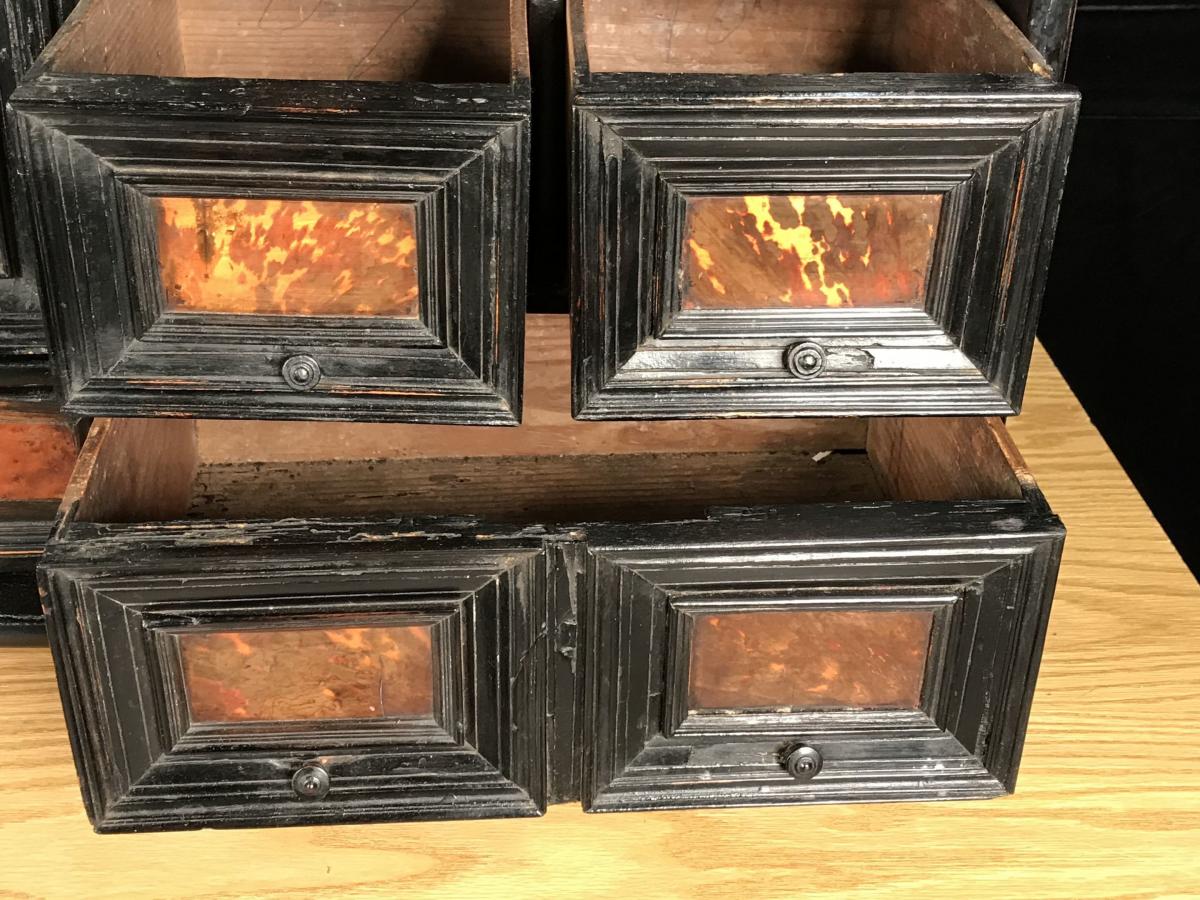
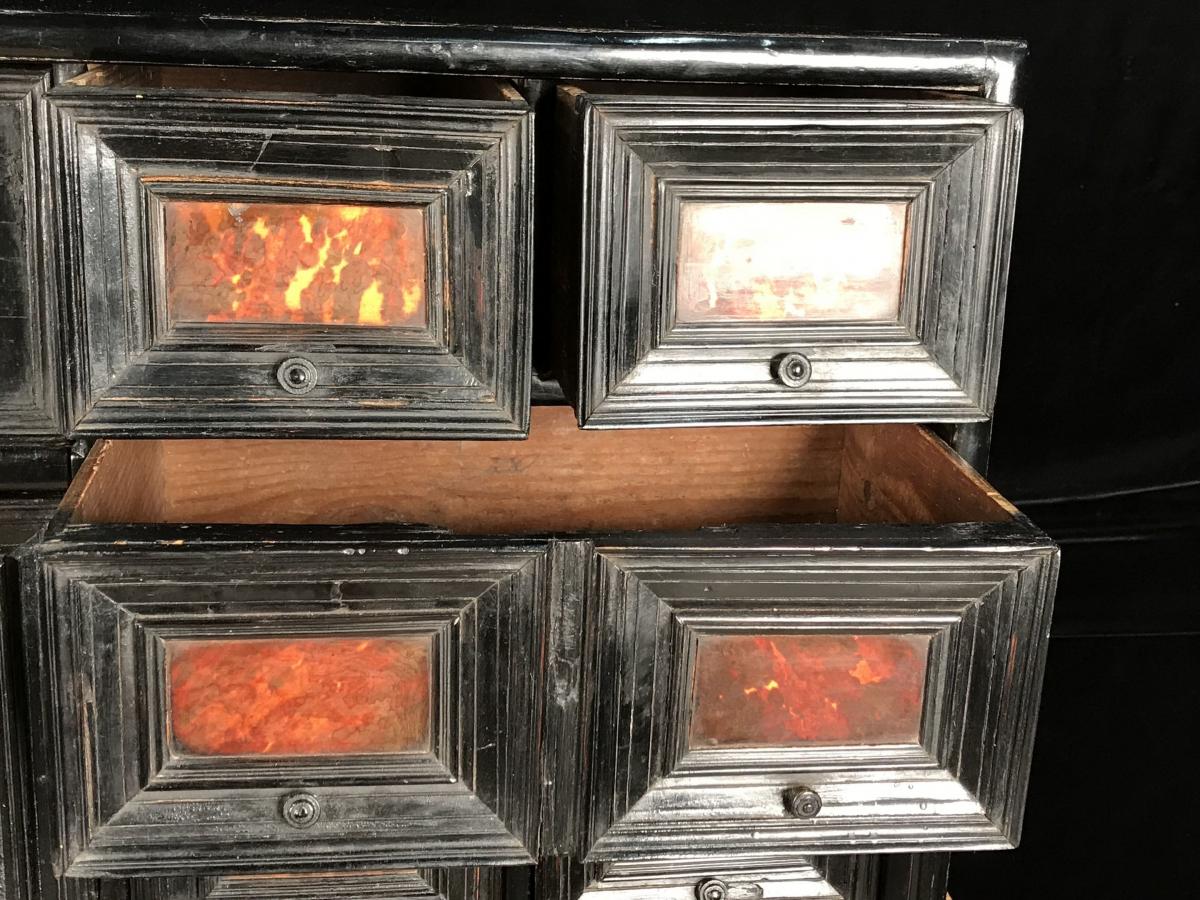
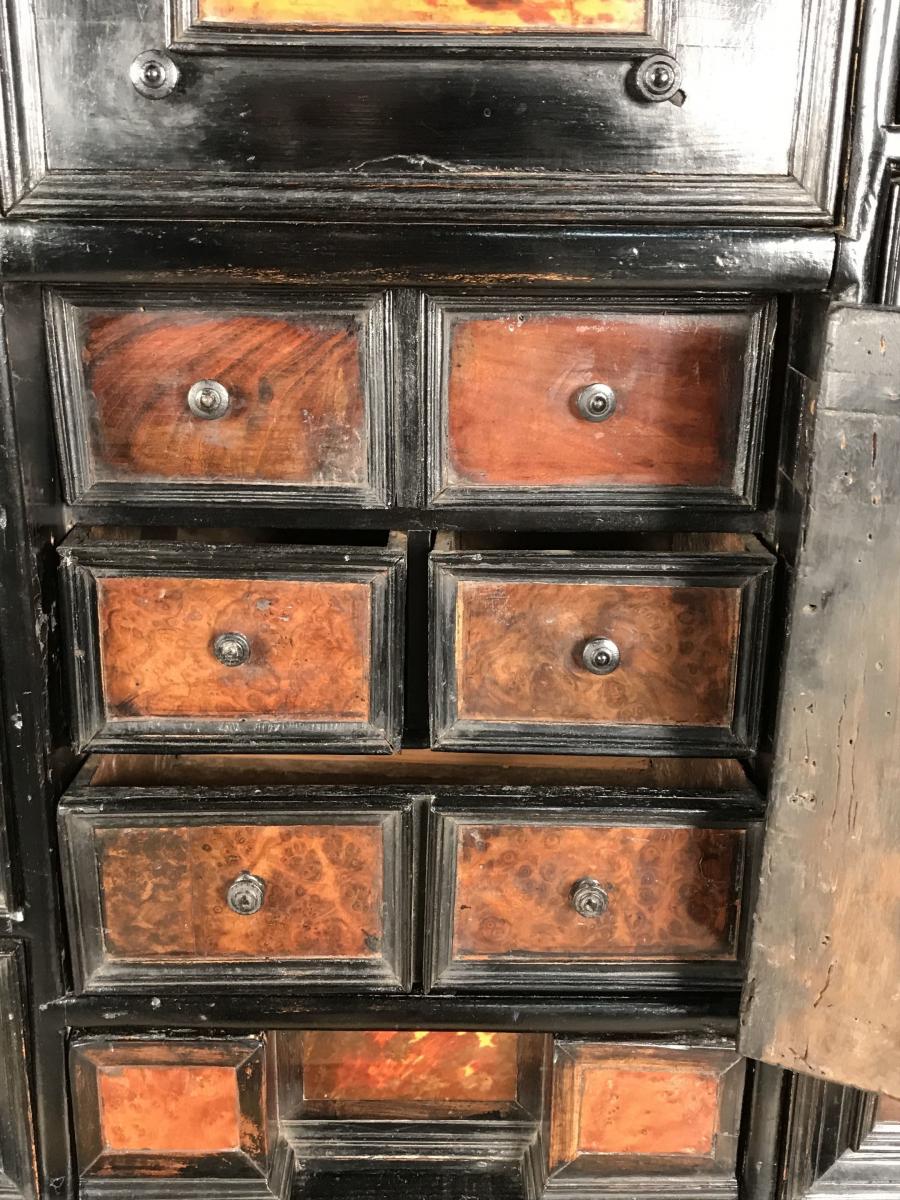
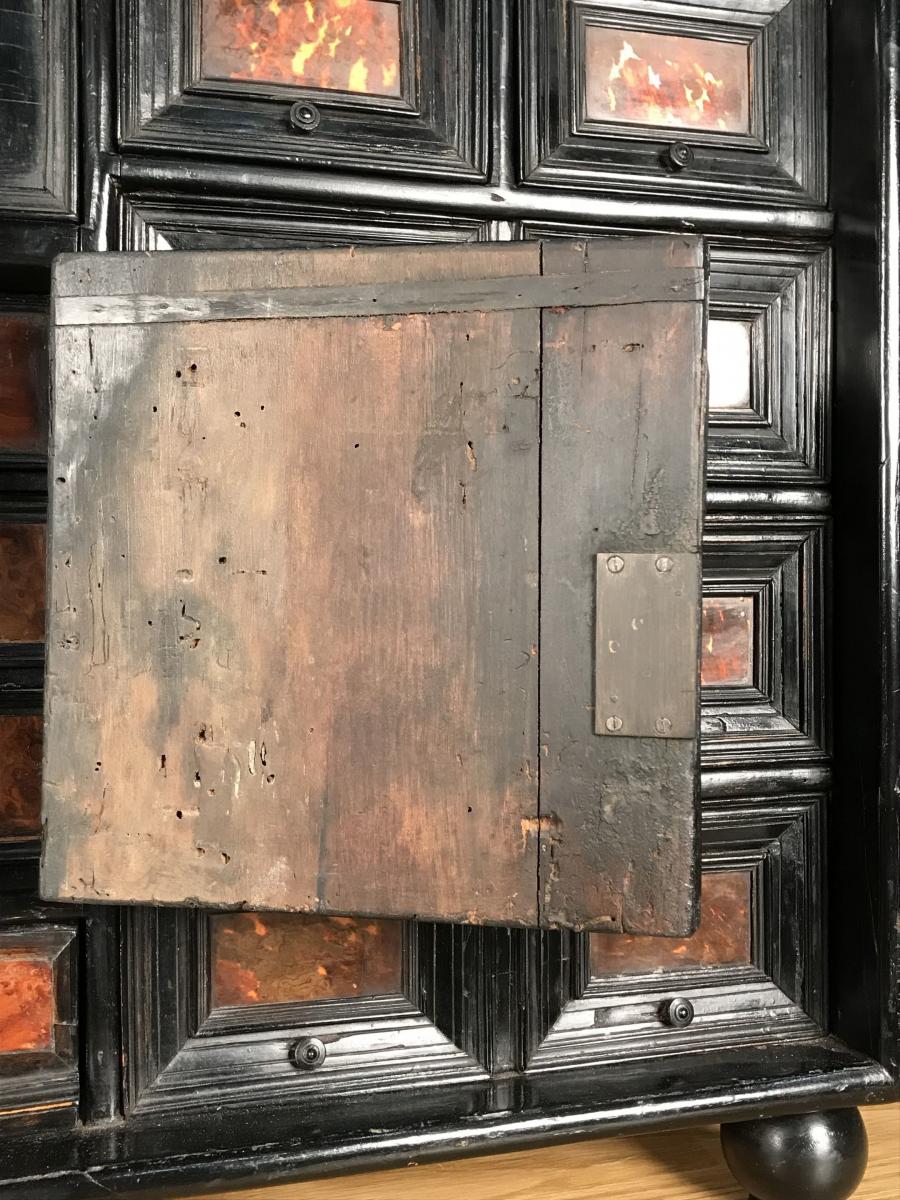
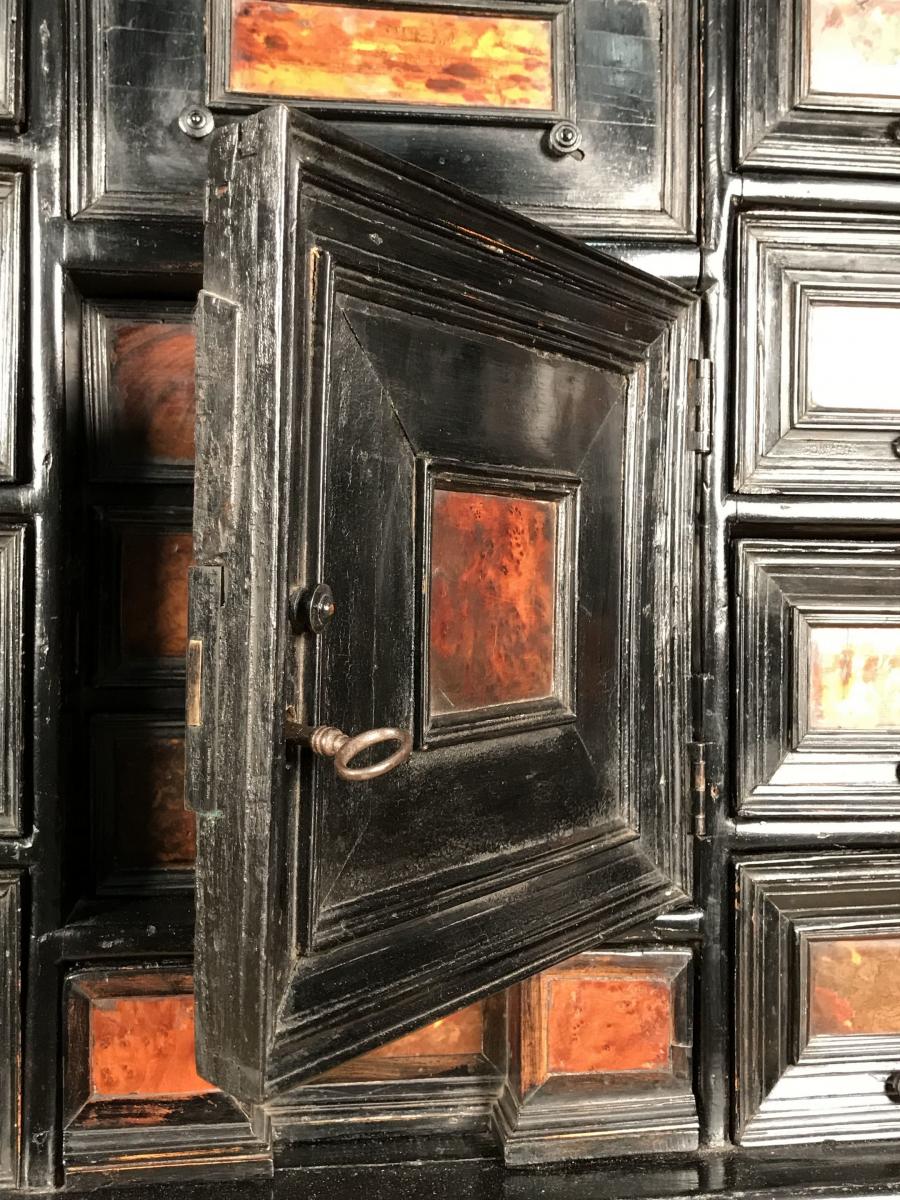
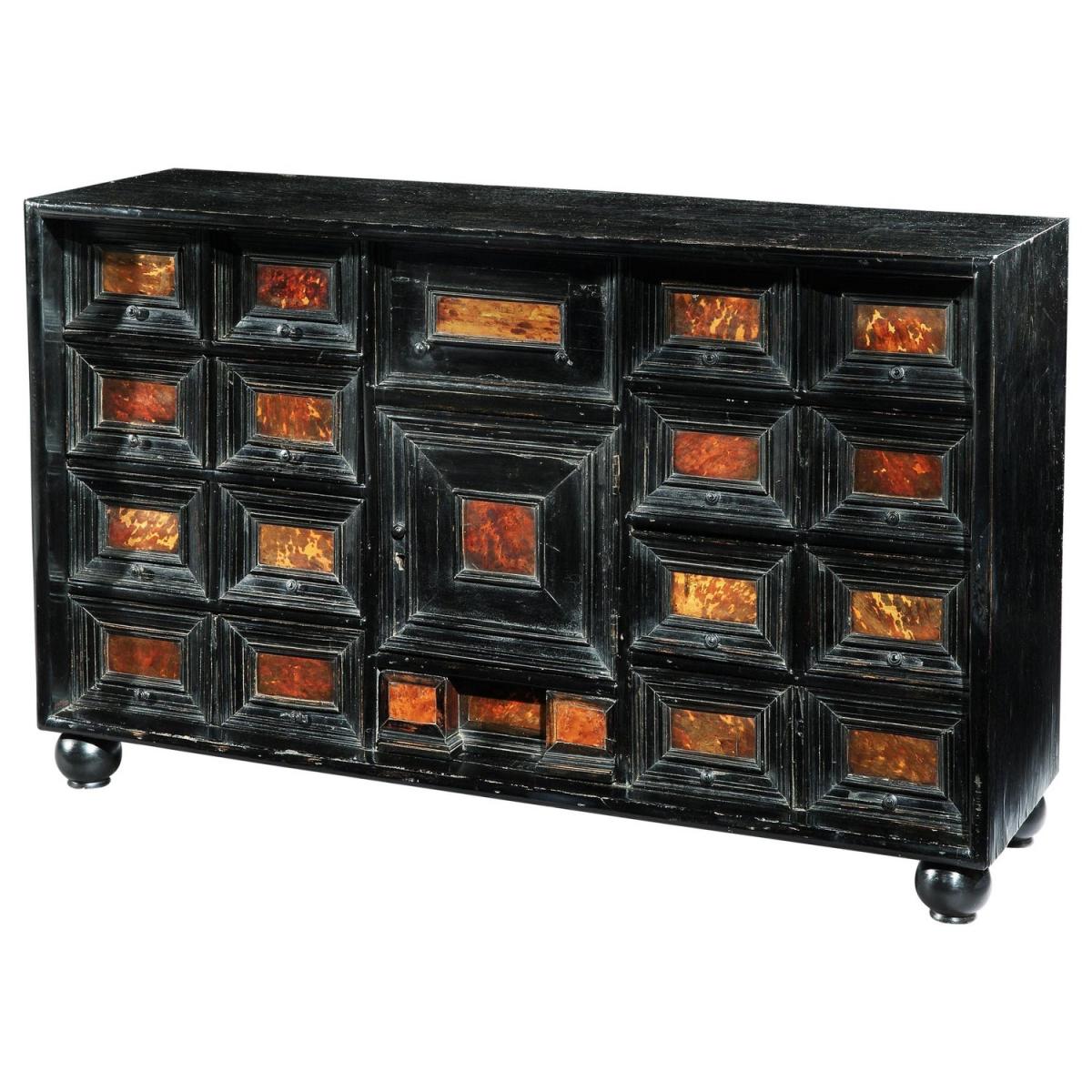
Price
£7200.00This object is eligible for a Certificate of BADA Provenance
The BADA Standard
- Since 1918, BADA has been the leading association for the antiques and fine art trade
- Members are elected for their knowledge, integrity and quality of stock
- Our clients are protected by BADA’s code of conduct
- Our dealers’ membership is reviewed and renewed annually
- Bada.org is a non-profit site: clients deal directly with members and they pay no hidden fees
Mid 17th century Flemish Ebonised Tortoishell Table Cabinet.
This cabinet was made in Flanders in the mid-17th century as a prestigious item for an affluent member of the professional classes. The significant amount of tortoishell employed demonstrates that it was conceived as an expensive, exotic item. The restrained form of the cabinet allows the grain of the tortoishell to be the dominant feature and woodwork has been ebonised to maximise the aesthetic of the colouring of the tortoishell. This cabinet is in good condition commensurate with its age and use.
The ebonized case enclosing eight small drawers (arranged as two singles, double drawer, two singles, double drawer) either side of a central door with a drawer above and below. The exterior drawers all with central tortoishell panels surrounded by deep reeded ebonised mouldings with ebonised knobs and lined with pine. The central door with original hinges opening with a key to reveal a cupboard with six small drawers, the top pair with central fruitwood panels and the other two pairs with exotic burr-wood panels, all with centrally fitted ebonised knobs. The bottom central drawer with an architectural front and three central tortoishell panels surrounded by an ebonised border. The top central drawer with a central tortoishell panel surrounded by a narrow moulding and two ebonised knobs. On bun feet.
The port of Bruges created great prosperity in Flanders which was also known as the Spanish Netherlands because the Habsburg overlord was also King of Spain. It was the region where the important production centres for art and furniture and trade with foreign countries were located. It is most likely that this cabinet was made in one of the main cities; Bruges, Ghent, Antwerp, and Brussels.
Cabinet furniture was a luxury item. Analysis of 17th century inventories demonstrates that it was almost exclusively owned by the aristocracy and professionals with significant positions in society and its prestigious status is shown by the fact that cabinets were placed in the most important rooms. In Flemish regions cabinets were decorated with precious materials, the prerogative of the carpenters gild, and ebony-workers developed their own style of lacquer decoration. Tortoishell was widely used for inlay from 1640 which the ebony-workers bought from art dealers.
Most tortoishell was a luxury item imported from the West Indies and sold in Spanish and Portuguese ports from where it was shipped to Bruges. It was a precious, expensive material and as early as 1664 was being copied using less costly materials such as coloured ox horn.
A base of vermillion was used to prevent the wood carcass from being seen through the transparent tortoishell which was kept supply in sand-filled heated cushions. Before the tortoishell veneer was applied, a sticky, coloured underlay was put on the back of the shell and covered with paper or parchment The veneer was then applied in the same way as wood veneer but with less pressure on the more delicate shell. Finally it was polished.
Provenance: Private Collection.
Dimensions
Length 97.5cm., Height 61cm., Depth 29cm.Condition report
Minor losses, wear to the ebonising and nibbles to the woodwork commensurate with age. The fruitwood veneers on the two top drawers of the interior cupboard period but possibly replaced. Lock to door later. Old repair to ebonised front on top central drawer. Some knobs replaced. Bun feet recent replacement.The BADA Standard
- Since 1918, BADA has been the leading association for the antiques and fine art trade
- Members are elected for their knowledge, integrity and quality of stock
- Our clients are protected by BADA’s code of conduct
- Our dealers’ membership is reviewed and renewed annually
- Bada.org is a non-profit site: clients deal directly with members and they pay no hidden fees


